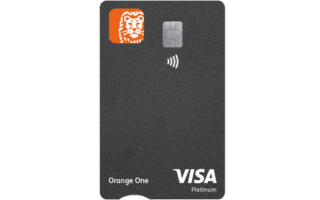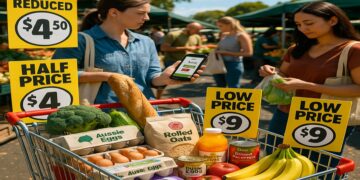How to Save Money at the Supermarket with Financial Intelligence

Importance of Financial Management in Grocery Shopping
In today’s economic climate, effective financial management is paramount. One of the most accessible areas to exercise this skill is at the supermarket. By employing financial intelligence, shoppers can significantly reduce their grocery bills while still maintaining the quality of their purchases. In Australia, where living costs can be high, being savvy about grocery spending is more important than ever.
To begin with, implementing a structured budgeting approach can greatly enhance your shopping experience. Creating a weekly or monthly budget allows you to track your grocery expenses meticulously. For example, allocate a specific amount each week for groceries based on your household’s needs. This method encourages discipline and ensures you do not overspend. Utilize budgeting apps or spreadsheets to monitor your expenses accurately, making adjustments as necessary for fluctuations in income or prices.
Meal planning is another effective strategy for reducing costs. By organizing meals ahead of time, you can prevent impulse buying and minimize food waste. For instance, creating a weekly meal plan that incorporates ingredients used across several meals can lead to substantial savings. If you plan to use chicken in multiple dishes, purchasing in bulk can often provide financial benefits through reduced prices. Furthermore, by preparing a shopping list based on this plan, you are less likely to stray from your budget and more likely to purchase only essential items.
Maximizing Savings through Discounts
Another key area for potential savings is utilizing sales and discounts. Australian supermarkets frequently run promotional offers, loyalty programs, and coupons which can lead to significant reductions in your overall expenditure. For instance, programs such as flybuys or Everyday Rewards enable you to accumulate points on regular purchases, which can later be redeemed for discounts. Additionally, mobile apps that highlight local sales can inform you of the best times to shop for certain products or brands.
It is also essential to understand the psychology of shopping. Timing your visits can make a notable difference. Shopping during off-peak hours not only allows for a more relaxed experience but may also lead to additional discounts as stores seek to move stock quickly. Awareness of product placement is equally important; essential items are often located at the back of the store, potentially leading to impulse purchases of non-essential items along the way.
Brand Comparison
Finally, considering the shift towards generic products can bolster financial intelligence in grocery shopping. Store brands or generic products often offer similar quality to name-brand items but at a lower price point. For instance, many Australian supermarkets, such as Coles and Woolworths, have developed their own brands that cater to various needs without sacrificing quality. Consumers are encouraged to compare products side by side to determine the most cost-effective option.
By implementing these methods, Australian consumers can harness their financial intelligence to optimize grocery shopping experiences. With thoughtful planning and informed decision-making, saving money at supermarkets becomes not only a practical goal but a potential new way of life. Through embracing these strategies, individuals can enjoy healthy eating habits while adhering to their financial constraints.
SEE ALSO: Click here to read another article
Strategic Shopping Techniques for Financial Success
To maximize savings and effectively apply financial intelligence at the supermarket, it is essential to adopt a set of strategic shopping techniques. These methods not only enhance expenditure control but also promote smarter purchasing decisions. One noteworthy technique involves the meticulous analysis of product prices, which can reveal significant differences between similar items across different brands and stores.
Establishing a comparative pricing mindset is crucial. For instance, regular visits to local supermarkets can help you become familiar with the typical prices of your frequently purchased items. This knowledge allows you to identify when items are on sale or priced unusually high. To further assist with this, consider maintaining a price diary where you document weekly prices for household staples. Over time, this valuable data will empower you to make informed choices about when and where to shop.
In-Store Navigation and Smart Product Selection
Navigating a supermarket with a clear strategy can also lead to reduced spending. Here are several guidelines to enhance your shopping experience:
- Stick to the Perimeter: Most supermarkets place fresh produce, dairy, and meats along the perimeter. Focusing on these sections while minimizing trips down the aisles filled with processed foods can lead to healthier and more budget-friendly choices.
- Shop with a Controlled Mindset: Avoid shopping while hungry, as this can lead to impulsive purchases. Maintaining focus on your shopping list is essential for adhering to your budget.
- Utilize Seasonal Produce: Purchasing fruits and vegetables that are in season can offer significant price reductions and fresher options. Seasonal produce is often less expensive and healthier, making it a wise choice for any shopper.
Additionally, understanding the timing of food sales is vital for financial intelligence in grocery shopping. Many stores offer discounts on items nearing their expiration dates to reduce losses. Paying attention to these items not only supports financial savings but also promotes the consumption of fresh products. However, it is imperative to evaluate whether the items are usable before their expiration dates and plan meals accordingly.
Investigating Alternative Shopping Avenues
Beyond traditional supermarkets, consider exploring alternative purchasing channels that may offer better prices. Farmers’ markets, discount grocery stores, and wholesale clubs often carry items at lower prices compared to mainstream supermarkets. Engaging with local producers can yield fresher products at potentially lower costs. Moreover, buying in bulk from wholesalers or trusted suppliers can lead to excellent savings, especially for non-perishable goods and everyday items.
By employing these strategic shopping techniques, Australian consumers can cultivate a robust financial foundation while shopping at supermarkets. Enhanced awareness and deliberate choices can translate into significant savings, all while allowing consumers to obtain high-quality food products within their budgetary constraints.
CHECK OUT: Click here to explore more
Leveraging Technology for Enhanced Savings
In the digital age, utilizing technology effectively can elevate your grocery shopping savings. A plethora of apps and online tools are designed to assist consumers in making financially savvy choices. For instance, grocery comparison apps enable consumers to check prices at various supermarkets in real-time, ensuring that they can capitalize on the best deals without needing to visit each store. In Australia, apps like Woolworths and Coles allow you to browse weekly specials and plan your shopping trip around the most discounted items.
Additionally, many supermarkets feature loyalty programs that reward repeat customers with discounts and promotional offers. Enrolling in these programs can lead to significant savings over time. For example, by accumulating points with each purchase, consumers can redeem these for discounts or even free items. Furthermore, some supermarkets offer personalized discounts based on shopping habits, which can provide further financial benefits tailored to your purchasing preferences.
Efficient Meal Planning and Bulk Purchasing
Another facet of financial intelligence in supermarket shopping is the importance of meal planning. Taking the time to plan meals for the week allows for more strategic shopping, reducing the tendency for impulse purchases. By drafting a meal plan that incorporates nutritious ingredients, consumers can create a precise shopping list, limiting unnecessary purchases.
When meal planning, consider utilizing bulk purchasing for staples that have extended shelf lives, such as grains, canned goods, and frozen items. This approach not only curtails the cost per unit but also provides security against price fluctuations. Research has shown that buying in bulk can save approximately 25-30% on everyday items. Ensure that you only purchase what your household can reasonably use to avoid food waste.
Timing Your Shopping for Ultimate Savings
The timing of your shopping can also impact the total spent at the supermarket. Many retailers periodically reduce prices on items that are surplus or seasonally produced. Shopping immediately before major holidays, such as Christmas or Easter, can lead to excellent deals on seasonal products. Additionally, visiting supermarkets early in the morning, right after stock replenishment, may unveil discounts on perishable items such as bread and dairy products, which are often marked down to facilitate quicker sales.
Being aware of sharing promotional calendars can further enhance savings. Many retailers in Australia conduct “end-of-season” sales aimed at clearing inventory. For example, in January, many supermarkets run sales on summer-related products, including BBQ goods and soft drinks, that will not be in demand during cooler seasons. Taking advantage of these sales can ensure you obtain items at markedly lower prices.
Adopting Smart Shopping Habits
Finally, fostering disciplined shopping habits is a vital component of saving at the supermarket. Always come prepared with a detailed shopping list based on your meal plan to avoid wandering into temptation. Furthermore, consider implementing the “30-day rule” for non-essential purchases. This tactic involves delaying gratification for 30 days to evaluate whether the item is truly necessary. This method not only helps instill discipline but also reduces overall spending.
By integrating technology, strategic meal planning, timing your shopping optimally, and cultivating disciplined habits, Australian consumers can harness financial intelligence to significantly lower their grocery bills, all while maintaining a balanced and healthy diet.
CHECK OUT: Click here to explore more
Conclusion
In conclusion, adopting financial intelligence while shopping at the supermarket can lead to substantial savings and a more efficient use of your resources. One of the most beneficial tools in this realm is to leverage technology. Mobile applications and websites allow consumers to effortlessly compare prices from various retailers, ensuring they are getting the best deal for their money. For example, apps like “ShopSavvy” enable shoppers to scan barcodes and instantly view prices from different stores, helping them make well-informed purchasing decisions. Additionally, tracking discounts and managing loyalty rewards programs can further optimize financial benefits by accumulating points and redeeming them for future purchases or discounts on essential items.
Moreover, focusing on efficient meal planning maximizes the value of each shopping trip. By taking the time to plan meals for the week ahead, consumers can create focused grocery lists that minimize unnecessary purchases and curb impulse buying. This strategy reduces overall grocery expenses and can significantly lower food waste, as items are purchased with precise intent. Strategically purchasing items in bulk can also yield significant savings, especially for non-perishable goods like rice, pasta, and canned products.
Furthermore, understanding the timing of your shopping can unveil substantial markdowns on seasonal goods and perishable items. For instance, many supermarkets in Australia often mark down fresh produce and meats as they near expiration, providing an opportunity for savings if shoppers plan their meals accordingly. Shoppers can also take advantage of widespread sales events, such as “Click Frenzy,” which offer incredible discounts during special promotions.
To reinforce this disciplined approach, cultivating smart shopping habits is essential. Techniques like the “30-day rule,” where individuals must wait 30 days before making a discretionary purchase, encourages critical assessment and minimizes impulse buying. This practice not only saves money but also promotes a more conscientious shopping mindset.
Ultimately, by embracing a multifaceted approach that combines technology, strategic planning, appropriate timing, and disciplined shopping habits, consumers in Australia can not only save money but also enhance their overall shopping experience. Remaining proactive and continually seeking new strategies to improve financial outcomes is crucial in today’s fast-paced consumer environment. Thus, the journey toward smart and economical supermarket shopping transcends mere cost-cutting; it encompasses making informed decisions that significantly contribute to long-term financial wellness.

Linda Carter is a writer and expert in finance and investments. With extensive experience helping individuals achieve financial stability and make informed decisions, Linda shares her knowledge on the Innovbs platform. Her goal is to provide readers with practical advice and effective strategies to manage their finances and make smart investment choices.






